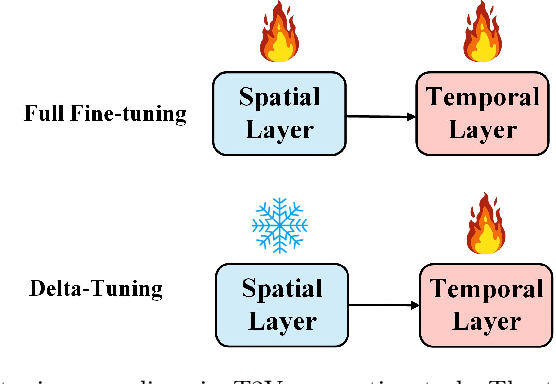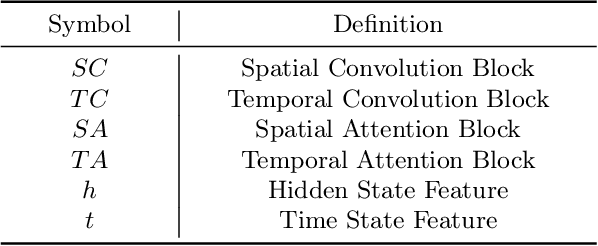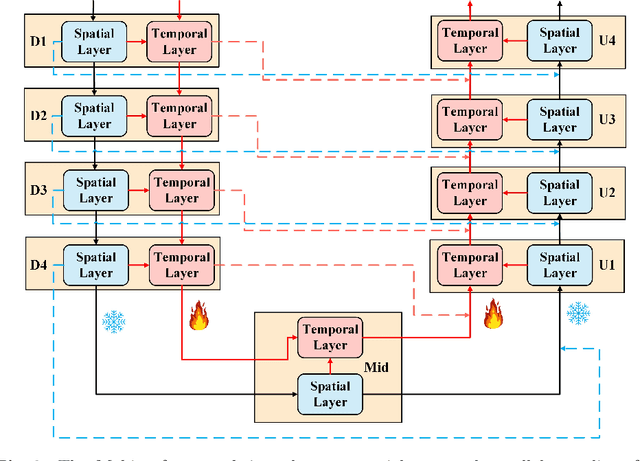Jinchao Zhang
Exploiting Prefix-Tree in Structured Output Interfaces for Enhancing Jailbreak Attacking
Feb 19, 2025Abstract:The rise of Large Language Models (LLMs) has led to significant applications but also introduced serious security threats, particularly from jailbreak attacks that manipulate output generation. These attacks utilize prompt engineering and logit manipulation to steer models toward harmful content, prompting LLM providers to implement filtering and safety alignment strategies. We investigate LLMs' safety mechanisms and their recent applications, revealing a new threat model targeting structured output interfaces, which enable attackers to manipulate the inner logit during LLM generation, requiring only API access permissions. To demonstrate this threat model, we introduce a black-box attack framework called AttackPrefixTree (APT). APT exploits structured output interfaces to dynamically construct attack patterns. By leveraging prefixes of models' safety refusal response and latent harmful outputs, APT effectively bypasses safety measures. Experiments on benchmark datasets indicate that this approach achieves higher attack success rate than existing methods. This work highlights the urgent need for LLM providers to enhance security protocols to address vulnerabilities arising from the interaction between safety patterns and structured outputs.
Control-CLIP: Decoupling Category and Style Guidance in CLIP for Specific-Domain Generation
Feb 17, 2025Abstract:Text-to-image diffusion models have shown remarkable capabilities of generating high-quality images closely aligned with textual inputs. However, the effectiveness of text guidance heavily relies on the CLIP text encoder, which is trained to pay more attention to general content but struggles to capture semantics in specific domains like styles. As a result, generation models tend to fail on prompts like "a photo of a cat in Pokemon style" in terms of simply producing images depicting "a photo of a cat". To fill this gap, we propose Control-CLIP, a novel decoupled CLIP fine-tuning framework that enables the CLIP model to learn the meaning of category and style in a complement manner. With specially designed fine-tuning tasks on minimal data and a modified cross-attention mechanism, Control-CLIP can precisely guide the diffusion model to a specific domain. Moreover, the parameters of the diffusion model remain unchanged at all, preserving the original generation performance and diversity. Experiments across multiple domains confirm the effectiveness of our approach, particularly highlighting its robust plug-and-play capability in generating content with various specific styles.
Semantic to Structure: Learning Structural Representations for Infringement Detection
Feb 11, 2025Abstract:Structural information in images is crucial for aesthetic assessment, and it is widely recognized in the artistic field that imitating the structure of other works significantly infringes on creators' rights. The advancement of diffusion models has led to AI-generated content imitating artists' structural creations, yet effective detection methods are still lacking. In this paper, we define this phenomenon as "structural infringement" and propose a corresponding detection method. Additionally, we develop quantitative metrics and create manually annotated datasets for evaluation: the SIA dataset of synthesized data, and the SIR dataset of real data. Due to the current lack of datasets for structural infringement detection, we propose a new data synthesis strategy based on diffusion models and LLM, successfully training a structural infringement detection model. Experimental results show that our method can successfully detect structural infringements and achieve notable improvements on annotated test sets.
WalkVLM:Aid Visually Impaired People Walking by Vision Language Model
Dec 30, 2024Abstract:Approximately 200 million individuals around the world suffer from varying degrees of visual impairment, making it crucial to leverage AI technology to offer walking assistance for these people. With the recent progress of vision-language models (VLMs), employing VLMs to improve this field has emerged as a popular research topic. However, most existing methods are studied on self-built question-answering datasets, lacking a unified training and testing benchmark for walk guidance. Moreover, in blind walking task, it is necessary to perform real-time streaming video parsing and generate concise yet informative reminders, which poses a great challenge for VLMs that suffer from redundant responses and low inference efficiency. In this paper, we firstly release a diverse, extensive, and unbiased walking awareness dataset, containing 12k video-manual annotation pairs from Europe and Asia to provide a fair training and testing benchmark for blind walking task. Furthermore, a WalkVLM model is proposed, which employs chain of thought for hierarchical planning to generate concise but informative reminders and utilizes temporal-aware adaptive prediction to reduce the temporal redundancy of reminders. Finally, we have established a solid benchmark for blind walking task and verified the advantages of WalkVLM in stream video processing for this task compared to other VLMs. Our dataset and code will be released at anonymous link https://walkvlm2024.github.io.
ILDiff: Generate Transparent Animated Stickers by Implicit Layout Distillation
Dec 30, 2024



Abstract:High-quality animated stickers usually contain transparent channels, which are often ignored by current video generation models. To generate fine-grained animated transparency channels, existing methods can be roughly divided into video matting algorithms and diffusion-based algorithms. The methods based on video matting have poor performance in dealing with semi-open areas in stickers, while diffusion-based methods are often used to model a single image, which will lead to local flicker when modeling animated stickers. In this paper, we firstly propose an ILDiff method to generate animated transparent channels through implicit layout distillation, which solves the problems of semi-open area collapse and no consideration of temporal information in existing methods. Secondly, we create the Transparent Animated Sticker Dataset (TASD), which contains 0.32M high-quality samples with transparent channel, to provide data support for related fields. Extensive experiments demonstrate that ILDiff can produce finer and smoother transparent channels compared to other methods such as Matting Anything and Layer Diffusion. Our code and dataset will be released at link https://xiaoyuan1996.github.io.
MedDiT: A Knowledge-Controlled Diffusion Transformer Framework for Dynamic Medical Image Generation in Virtual Simulated Patient
Aug 22, 2024Abstract:Medical education relies heavily on Simulated Patients (SPs) to provide a safe environment for students to practice clinical skills, including medical image analysis. However, the high cost of recruiting qualified SPs and the lack of diverse medical imaging datasets have presented significant challenges. To address these issues, this paper introduces MedDiT, a novel knowledge-controlled conversational framework that can dynamically generate plausible medical images aligned with simulated patient symptoms, enabling diverse diagnostic skill training. Specifically, MedDiT integrates various patient Knowledge Graphs (KGs), which describe the attributes and symptoms of patients, to dynamically prompt Large Language Models' (LLMs) behavior and control the patient characteristics, mitigating hallucination during medical conversation. Additionally, a well-tuned Diffusion Transformer (DiT) model is incorporated to generate medical images according to the specified patient attributes in the KG. In this paper, we present the capabilities of MedDiT through a practical demonstration, showcasing its ability to act in diverse simulated patient cases and generate the corresponding medical images. This can provide an abundant and interactive learning experience for students, advancing medical education by offering an immersive simulation platform for future healthcare professionals. The work sheds light on the feasibility of incorporating advanced technologies like LLM, KG, and DiT in education applications, highlighting their potential to address the challenges faced in simulated patient-based medical education.
Mobius: A High Efficient Spatial-Temporal Parallel Training Paradigm for Text-to-Video Generation Task
Jul 12, 2024



Abstract:Inspired by the success of the text-to-image (T2I) generation task, many researchers are devoting themselves to the text-to-video (T2V) generation task. Most of the T2V frameworks usually inherit from the T2I model and add extra-temporal layers of training to generate dynamic videos, which can be viewed as a fine-tuning task. However, the traditional 3D-Unet is a serial mode and the temporal layers follow the spatial layers, which will result in high GPU memory and training time consumption according to its serial feature flow. We believe that this serial mode will bring more training costs with the large diffusion model and massive datasets, which are not environmentally friendly and not suitable for the development of the T2V. Therefore, we propose a highly efficient spatial-temporal parallel training paradigm for T2V tasks, named Mobius. In our 3D-Unet, the temporal layers and spatial layers are parallel, which optimizes the feature flow and backpropagation. The Mobius will save 24% GPU memory and 12% training time, which can greatly improve the T2V fine-tuning task and provide a novel insight for the AIGC community. We will release our codes in the future.
Mobius: An High Efficient Spatial-Temporal Parallel Training Paradigm for Text-to-Video Generation Task
Jul 09, 2024



Abstract:Inspired by the success of the text-to-image (T2I) generation task, many researchers are devoting themselves to the text-to-video (T2V) generation task. Most of the T2V frameworks usually inherit from the T2I model and add extra-temporal layers of training to generate dynamic videos, which can be viewed as a fine-tuning task. However, the traditional 3D-Unet is a serial mode and the temporal layers follow the spatial layers, which will result in high GPU memory and training time consumption according to its serial feature flow. We believe that this serial mode will bring more training costs with the large diffusion model and massive datasets, which are not environmentally friendly and not suitable for the development of the T2V. Therefore, we propose a highly efficient spatial-temporal parallel training paradigm for T2V tasks, named Mobius. In our 3D-Unet, the temporal layers and spatial layers are parallel, which optimizes the feature flow and backpropagation. The Mobius will save 24% GPU memory and 12% training time, which can greatly improve the T2V fine-tuning task and provide a novel insight for the AIGC community. We will release our codes in the future.
Rephrasing the Reference for Non-Autoregressive Machine Translation
Nov 30, 2022



Abstract:Non-autoregressive neural machine translation (NAT) models suffer from the multi-modality problem that there may exist multiple possible translations of a source sentence, so the reference sentence may be inappropriate for the training when the NAT output is closer to other translations. In response to this problem, we introduce a rephraser to provide a better training target for NAT by rephrasing the reference sentence according to the NAT output. As we train NAT based on the rephraser output rather than the reference sentence, the rephraser output should fit well with the NAT output and not deviate too far from the reference, which can be quantified as reward functions and optimized by reinforcement learning. Experiments on major WMT benchmarks and NAT baselines show that our approach consistently improves the translation quality of NAT. Specifically, our best variant achieves comparable performance to the autoregressive Transformer, while being 14.7 times more efficient in inference.
AutoCAD: Automatically Generating Counterfactuals for Mitigating Shortcut Learning
Nov 29, 2022Abstract:Recent studies have shown the impressive efficacy of counterfactually augmented data (CAD) for reducing NLU models' reliance on spurious features and improving their generalizability. However, current methods still heavily rely on human efforts or task-specific designs to generate counterfactuals, thereby impeding CAD's applicability to a broad range of NLU tasks. In this paper, we present AutoCAD, a fully automatic and task-agnostic CAD generation framework. AutoCAD first leverages a classifier to unsupervisedly identify rationales as spans to be intervened, which disentangles spurious and causal features. Then, AutoCAD performs controllable generation enhanced by unlikelihood training to produce diverse counterfactuals. Extensive evaluations on multiple out-of-domain and challenge benchmarks demonstrate that AutoCAD consistently and significantly boosts the out-of-distribution performance of powerful pre-trained models across different NLU tasks, which is comparable or even better than previous state-of-the-art human-in-the-loop or task-specific CAD methods. The code is publicly available at https://github.com/thu-coai/AutoCAD.
 Add to Chrome
Add to Chrome Add to Firefox
Add to Firefox Add to Edge
Add to Edge